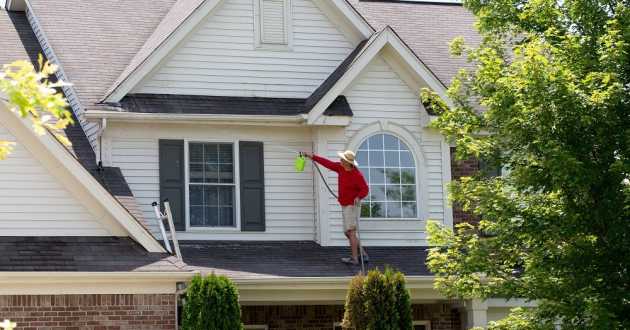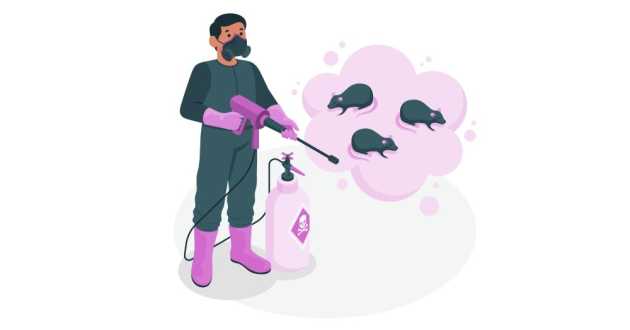Defend Your Space With Smart Pest Prevention And Air Quality Solutions
- - Category: Pest Control
- - 10 Sep, 2024
- - Views: 16
- Save
Smart Solutions for Pest Control and Air Quality.
Home is more than a place—it's a sanctuary. Maintaining its safety and comfort is paramount. For homeowners, keeping pests at bay and ensuring optimal indoor air quality are crucial components of this mission. This guide explores effective pest prevention strategies alongside practical tips for maintaining high indoor air quality. The goal is to help homeowners create a healthy, pest-free living environment.
The Importance of Pest Prevention
Pests are more than just a nuisance. They can pose significant health risks and cause extensive property damage. From termites gnawing through wooden structures to rodents spreading diseases, the impact of pests on home safety is profound. Effective pest prevention starts with understanding the types of pests that typically invade homes and the potential hazards they bring.
Common Household Pests
Household pests vary by region and climate, but some are universally troublesome. Ants, cockroaches, rodents, and termites are among the most common. Each of these pests has unique behaviors and preferred habitats, which can help homeowners identify and target their presence more effectively.
Health Risks Associated with Pests
Pests can carry diseases and allergens that pose serious health risks. For example, cockroaches can trigger asthma and allergies, while rodents can spread hantavirus and salmonella. Understanding these health risks underscores the importance of proactive pest control measures.
Property Damage from Pests
The financial impact of pest infestations can be significant. Termites, for instance, cause billions in property damage annually. Rodents can chew through wires, leading to fire hazards. Preventing these pests from entering your home can save money and protect your investment.
Smart Pest Prevention Strategies
Proactive prevention is the best defense against pests. By employing a combination of smart strategies, homeowners can significantly reduce the likelihood of infestations. These strategies range from maintaining cleanliness to using modern technology.
Cleanliness and Sanitation
Maintaining a clean home is the first line of defense against pests. Regularly cleaning floors, countertops, and other surfaces removes food particles that attract pests. Proper sanitation also involves sealing food containers and disposing of garbage promptly.
Sealing Entry Points
Pests often enter homes through small cracks and gaps. Inspecting and sealing these entry points can prevent infestations. Pay attention to areas around windows, doors, and utility pipes. Caulking and weather stripping can be effective tools in this effort.
Natural Deterrents
Using natural pest deterrents can be a safe and eco-friendly prevention method. Plants like mint and lavender can repel certain pests. Essential oils, such as peppermint and eucalyptus, can also be effective when used in sprays or diffusers.
Innovative Pest Control Technologies
Advancements in technology have created new and effective methods for pest control. Companies like Patriot Pest Management, Inc. offer homeowners innovative tools to monitor and manage pest populations, reducing the reliance on chemical treatments.
Electronic Pest Repellents
Electronic pest repellents emit ultrasonic waves that deter pests. These devices are safe for humans and pets, offering a non-toxic solution to keep pests away. They are particularly useful in areas like basements and attics.
Smart Traps
Smart traps use sensors and connectivity to monitor and capture pests. These traps can notify homeowners when they have caught something, allowing for timely removal. This technology is especially beneficial for managing rodent populations.
Integrated Pest Management (IPM)
IPM combines multiple pest control methods for a comprehensive approach. This strategy may include biological controls, like introducing natural predators, along with physical barriers and chemical treatments. IPM focuses on long-term prevention and minimal environmental impact.
The Role of Indoor Air Quality
While keeping pests out is vital, ensuring the air inside your home is clean and healthy is equally important. Poor indoor air quality can lead to respiratory issues and other health problems. Taking steps to maintain good air quality enhances overall home safety.
Common Indoor Air Pollutants
Indoor air can be contaminated by various pollutants, including dust, pet dander, mold spores, and volatile organic compounds (VOCs). Identifying these common pollutants is the first step in improving air quality.
Health Implications of Poor Air Quality
Exposure to indoor air pollutants can cause or exacerbate health issues such as asthma, allergies, and respiratory infections. Long-term exposure can lead to more severe conditions, highlighting the importance of maintaining clean air at home.
Monitoring Air Quality
Numerous tools and devices can help homeowners monitor indoor air quality. Air quality monitors measure levels of pollutants and provide real-time data. This information allows for timely actions to improve air quality.
Practical Tips for Improving Indoor Air Quality
Improving indoor air quality involves a combination of strategies. By implementing these tips, homeowners can create a healthier living environment.
Ventilation and Air Circulation
Proper ventilation is crucial for maintaining good air quality. Opening windows and using exhaust fans can help circulate air and reduce pollutant levels. Air purifiers with HEPA filters can also capture airborne particles.
Regular Cleaning and Dusting
Dust and allergens can build up on surfaces and become airborne. To reduce these pollutants, regular cleaning is key. Using a vacuum with a HEPA filter and dusting with damp cloths can make a significant difference. It's also crucial to focus on areas like carpets, upholstery, and curtains. For instance, True Air Technologies offers solutions to help maintain a cleaner environment.
Use of Houseplants
Certain houseplants can improve air quality by absorbing pollutants and releasing oxygen. Plants like spider plants, snake plants, and peace lilies are known for their air-purifying capabilities. Incorporating these plants into your home decor provides aesthetic and health benefits.
Building a Safer Home Environment
Combining pest prevention with strategies to improve indoor air quality builds a safer, healthier home. Each method complements the other, creating a comprehensive approach to home safety.
Creating a Maintenance Routine
Establishing a regular maintenance routine ensures that both pest control and air quality improvement strategies are consistently applied. This routine might include seasonal inspections, regular cleaning, and periodic use of electronic pest repellents.
Engaging Professional Services
Sometimes, professional assistance is necessary to address severe pest issues or significant air quality concerns. Pest control experts and HVAC professionals can provide specialized services to ensure your home remains safe and healthy.
Staying Informed
Keeping up with the latest advancements in pest control and air quality technologies can help homeowners stay ahead of potential issues. Subscribing to relevant newsletters, joining homeowner forums, and attending workshops can provide valuable information and resources.
Home safety extends beyond physical security to include a pest-free environment and high indoor air quality. By implementing smart pest prevention strategies and maintaining good air quality, homeowners can protect their health, property, and peace of mind.
This guide provides a comprehensive approach to defending your space. However, for personalized advice and advanced solutions, consider consulting professionals in pest control and air quality management. Taking these proactive steps ensures that your home remains a true sanctuary.
Explore more tips and resources on our website to continue enhancing your home's safety and comfort.



